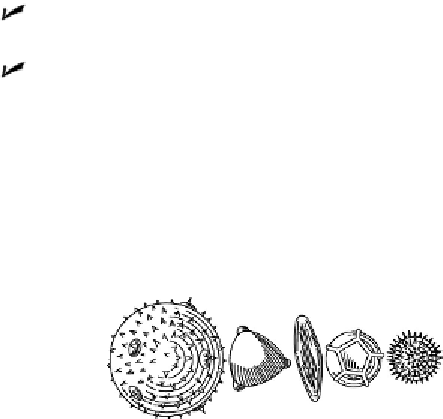Geology Reference
In-Depth Information
nutrients to survive. Finally, many species of flowering plants produces a pollen grain as distinct as its
flowers — with visible, identifiable characteristics to tell a scientist exactly what plant it came from.
Scientists find pollen grains preserved in the bottoms of lakes or other sediments where they are de-
posited chronologically, season by season, year after year. By identifying the different plants the pollen
must have come from, the scientists can answer questions about past environments such as:
What plants were living thousands (or millions) of years ago?
What were the conditions of temperature and moisture?
By looking at preserved pollen grains, they can also ask and answer questions about how human so-
cieties (after they appeared) affected the environments they lived in. For example, finding a change in
the pollen grains from trees (indicating forest) to grass (indicating agriculture).
The next time pollen fills your eyes and nose, remember how useful those millions of irritating grains
will be to future scientists seeking answer to mysteries of the past!
After arriving in Europe and Asia, a subspecies of
Homo sapiens,
the Neanderthals, dom-
inated the landscape from about 200,000 to 30,000 years ago.
Homo sapiens neander-
thalensis
had skulls very different from modern humans — a prominent brow ridge and
receding chin — and were generally more muscular and shorter than modern humans.
Neanderthals were, however, very similar to prehistoric humans in the way they lived:
building shelters, using tools, and burying their dead with personal items and flowers.
Evidence exists that by 30,000 years ago,
Homo sapiens
existed in Europe. The rest, as
they say, is history (not geology).






